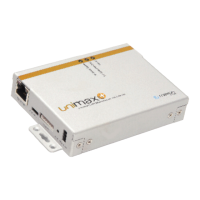check the integrity of files.
4.9.4 SHA
SHA stands for Secure Hash Algorithm. The three SHA algorithms are structured
differently and are distinguished as SHA-0, SHA-1, and SHA-2. The SHA-2 family uses
an identical algorithm with a variable digest size which is distinguished as SHA-224,
SHA-256, SHA-384, and SHA-512.
4.10 ISAKMP
ISAKMP defines the procedures for authenticating a communicating peer, creation and
management of Security Associations, key generation techniques, and threat
mitigation (e.g. denial of service and replay attacks). ISAKMP typically utilizes IKE for key
exchange, although other methods can be implemented.
4.11 ESM
Encapsulating Security Payload (ESP) is a member of the IPSec protocol suite. In IPSec, it
provides origin authenticity, integrity, and confidentiality protection of packets. ESP also
supports encryption-only and authentication-only configurations, but using encryption
without authentication is strongly discouraged because it is insecure. Unlike
Authentication Header (AH), ESP does not protect the IP packet header. However, in
Tunnel Mode, where the entire original IP packet is encapsulated with a new packet
header added, ESP protection is afforded to the whole inner IP packet (including the
inner header) while the outer header remains unprotected. ESP operates directly on
top of IP, using IP protocol number 50.
4.12 RIP (Routing Information Protocol)
RIP is a distance-vector routing protocol, which employs the hop count as a routing
metric. The hold down time is 180 seconds. RIP prevents routing loops by implementing
a limit on the number of hops allowed in a path from the source to a destination. The
maximum number of hops allowed for RIP is 15. This hop limit, however, also limits the
size of networks that RIP can support. A hop count of 16 is considered an infinite
distance and used to deprecate inaccessible, inoperable, or otherwise undesirable
routes in the selection process.
There are three versions of RIP. Unimax+ supports RIPv2.

